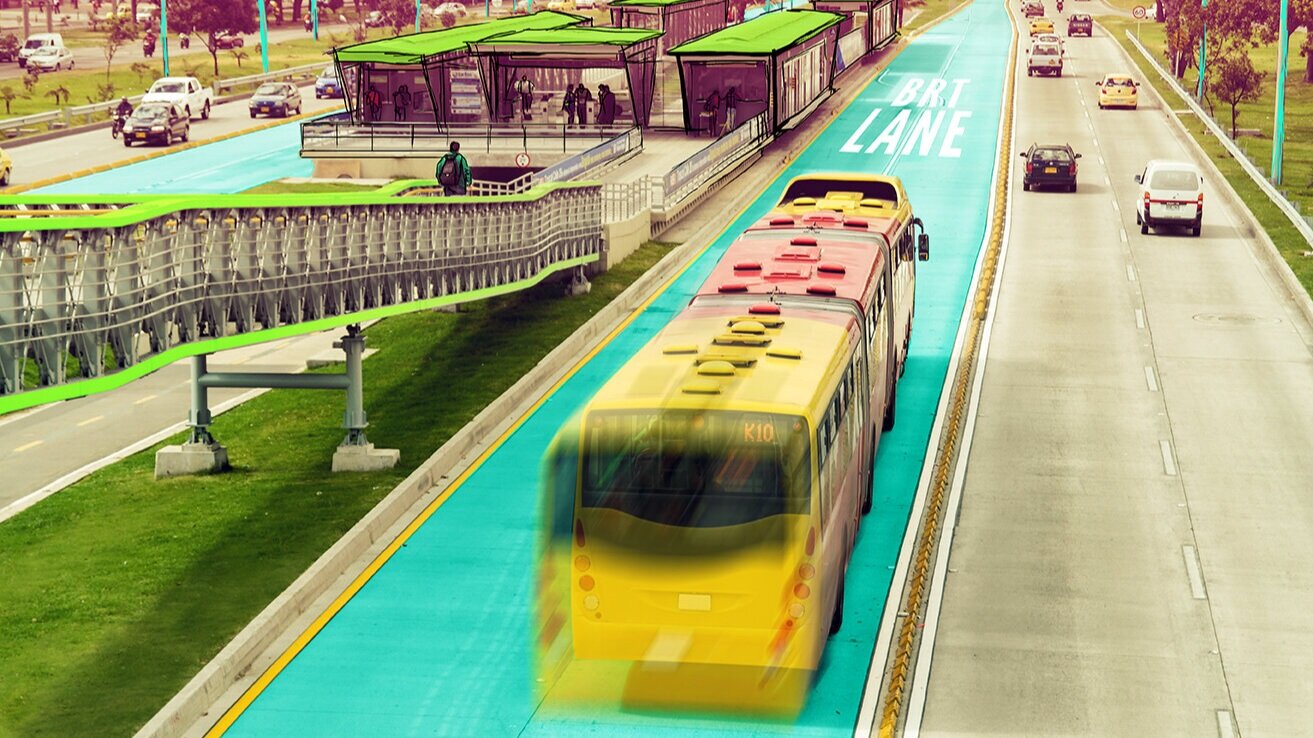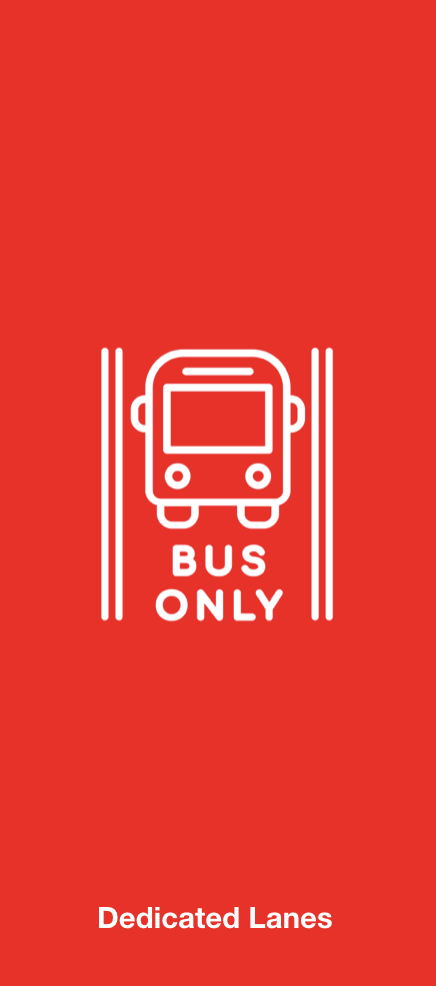What is BRT?
Bus Rapid Transit (BRT) transforms the bus-riding experience through a combination of features including dedicated bus lanes that are typically median aligned, off-board fare collection, level boarding, and bus priority at intersections. Cities around the world have integrated BRT into their public transit systems to create a faster, more reliable commute for millions of people.
To clarify the concept and distinguish BRT from bus priority improvements, a group of internationally renowned BRT planning and implementation experts have agreed upon the following definition of BRT:
What is BRT?
BRT is a high-quality bus-based transit system that delivers fast, comfortable, and cost-effective services to riders.
Five essential ingredients known as “the BRT Basics” are responsible for putting “rapid” in Bus Rapid Transit. These elements address the main sources of delay for city buses and frustrations for riders – the delay of mixed traffic, the delay at stations, and the delay from intersections. By reducing common sources of delay, BRT is more reliable, convenient, and faster than conventional bus services, and shares some service characteristics with the more familiar rail transit.
Five Basic Features of Bus Rapid Transit
Dedicated Right-of-Way: Bus-only lanes make for faster travel and ensure that buses are never delayed due to car congestion.
Busway Alignment: Center of the roadway or bus-only corridor keeps buses away from the busy curbside where cars are parking, standing, and turning. A two-way center-aligned busway in the central verge of a two-way road is the most efficient.
Intersection Treatments: Prohibiting turns for traffic across the bus lane reduces delays caused to buses by turning traffic. Prohibiting such turns is the most important measure for moving buses through intersections – more important even than signal priority.
Platform-level Boarding: The station should be level with the bus floor for quick and easy boarding. This also makes it fully accessible for wheelchairs, passengers with disabilities, and strollers with minimal delays.
Off-board Fare Collection: Fare payment at the station, instead of on the bus, eliminates the delay caused by passengers waiting to pay on board.
NEXT > BRT IN ACTION









